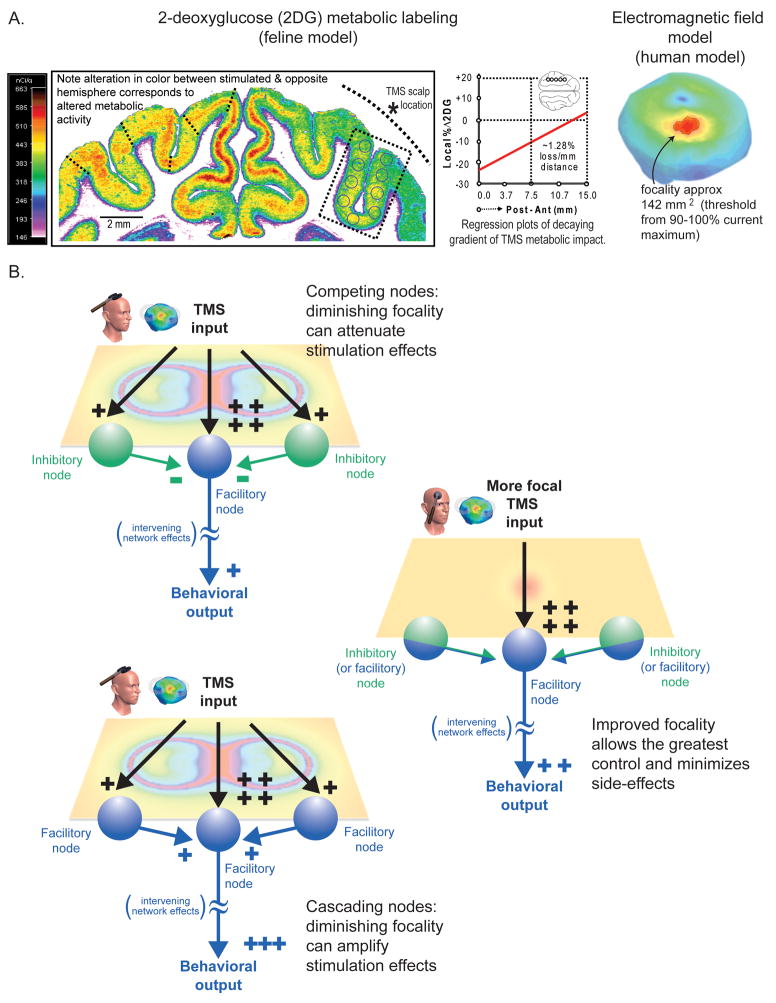Figure 4. TMS focality.
A. 2DG recordings and current density model. Recordings using 2-deoxyglucose (2DG) metabolic labeling demonstrating a focal area of online effect of ~176 mm2 in a feline model; see (Valero-Cabre, Rushmore et al., 2005)). Note, smaller coils used in cats, which typically cannot be used with humans, usually lead to greater focality; but coils used in the clinic are thought to maximally stimulate regions exceeding ~100–200 mm2 (demonstrated on right with a field-model). Other studies have demonstrated that effective tissue stimulation can take place in smaller regions under certain stimulation conditions (Toschi et al. 2008). (Note- as technologies improve focality should be expressed in terms of volume.) B. Competing nodes. Even though small areas might be maximally stimulated during TMS, it is possible that nodes far from the maxima location are also affected (which might have an attenuating (or amplifying) affect on stimulation). Herein, we demonstrate the effects of a typical figure-of-eight coil with a predicted maximum effect at the coil’s center (but with competing effects at the coil boundaries) compared to a theoretical coil with greater focality (i.e., attenuated current spread) along a theoretical surface plane. Additionally when stimulation intensity is increased, side effects can potentially be induced through the coactivation of additional nodes with confounding function, which may be completely absent at lower stimulation intensities. Overall, one needs to consider all possible side-effects derived from a lack of focality, both those that might artificially boost or attenuate the magnitude the predicted behavioral effects. Fundamentally greater control in focality and depth will lead to more efficacious stimulation.

